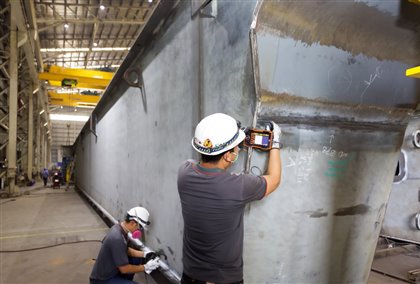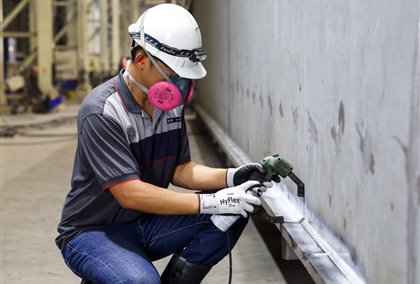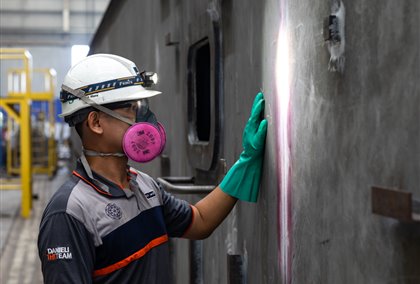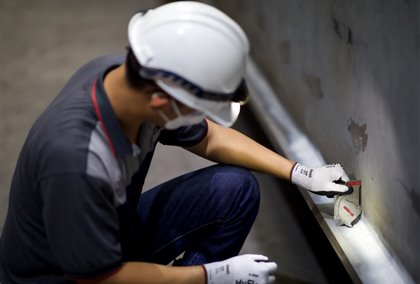Danieli Co. Ltd. Welding Process and Certification Standards
Welding is a core activity in fabricating plants, undertaken by skilled, qualified operators working according to a welding quality management system under the control of Responsible Welding Coordinators. The process is used to prepare joints for connection in the shop and on site, and to attach other fixtures and fittings. Depending on the project requirements, different welding techniques are used for different fabrication tasks.
Essentially, the welding process uses an electric arc to generate heat to melt the parent material in the joint. A separate filler material supplied as a consumable electrode or welding wire also melts and combines with the parent material to form a molten weld pool. As welding progresses along the joint, the weld pool solidifies and the parent and weld metal fuse together. Several passes or runs may be required to fill the joint, or to build up the weld to the specified dimension.
Certified process and qualified welders are periodically monitored, which is the normal practice used in Danieli fabrication shops in order to achieve the highest quality for the finished product
Each welding joint is classified differently, according to class levels that define the criticality, and each one is checked by a team of qualified inspectors usng different Non-Destructive Tests
Each NDT operator is qualified as per international standard SNT -TC- 1A and ISO 9712
- Type and extension of the NDT to be performed.
- Corresponding Acceptance criteria between the DANIELI welding class and ISO 5817 quality levels.
| Danieli Welding Class | Quality Level - iso 5817 |
|---|---|
| D | B |
| C | C |
| B | D |
| A | D |
Welding processes are certified by qualified third parties as per international standards.
Certification according to ISO 3834-2, TÜV NORD: Quality requirements for fusion welding of metallic materials. Comprehensive quality requirements.
Certification according to EN 1090-1/2, EXC 3 , TÜV NORD: Execution of steel structures and aluminum structures. Requirements for conformity assessment of structural components. / Technical requirements for steel structures.
| DIN EN ISO 3834-2 | EN 1090 - 1 / 2 , EXC3 |
| |
|
The welding process is supported by welding engineering focused on the following activities:
- Welding coordinator: European Welding Engineer, tasks and responsibilities according to ISO 14731
- Assistant Welding coordinator: International Welding Inspector.
- Welding procedure qualification: ISO 15614-1/6/7, ASME Section IX, AWS D14.1/D14.1M
- Welding procedure specification: ISO 15609-1, ASME Section IX, AWS D14.1/D14.1M.
- Welders qualification: ISO 9606-1/3, ASME Section IX, AWS D14.1/D14.1M
- Welding operator's qualification: ISO 14732, ASME Section IX, AWS D14.1/D14.1M
- Welding plan and traceability: Assigned for each job / drawing (welded structure).
Example of welders / welding operators monitoring report and welding plan and traceability:









